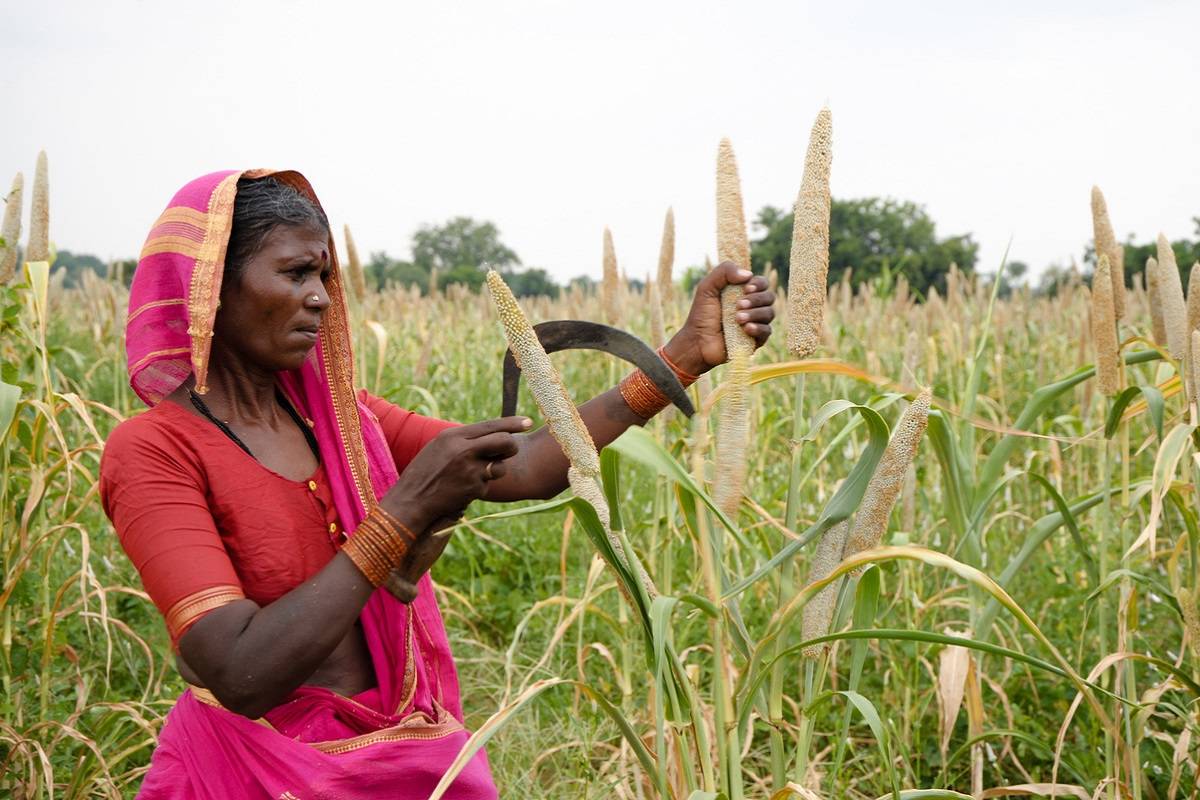
About 60 years ago in India, millets were the major grains grown. Millets made up around 40 per cent of all cultivated grains before Green Revolution contributing more than wheat and rice.
The changing dietary pattern, coupled with government policies that favoured rice and wheat production to assure food security, led to a sharp decline in millet acreage and its production. The present area under millets is 50 per cent lower than that during 1960 and the share of millets in the total foodgrain basket is only around 6 per cent.
The Environmental stresses and deepening climate crisis have augmented the need for crop diversification through the promotion of climate-smart crops. Cognizing the role of millets in response to the agrarian, nutritional, and climate challenges.
Remarkably, India produces 80 per cent of Asia’s and 20 per cent of the world’s millet. In 2020, the country’s millet exports touched $26 million.
To educate farmers, efforts are also being made about better millet-growing techniques and mainstreaming millets in the agricultural production system. However, to incentivize the farmers there is a long way to go, the majority of whom are resource-poor, to produce millets on their marginal lands.
Displaying the health benefits of millets may not be attractive for farmers to take up the nutria-cereals with poor productivity potential (with the national average of around 1.2 tonnes per hectare) in place of rice and wheat (yield of around 3.5-4 tonnes/hectare). Therefore, the creation of additional demand for millets in the livestock sector, a source of livelihood for two-thirds of the rural population would be a balanced way to make this crop popular among farmers. For a country like India where feed and fodder deficit has been identified as one of the major constraints in achieving the desired level of livestock production, this is particularly important. The recently reported shortage in green fodder, dry fodder, and concentrates is 11.24 per cent, 23.4 per cent, and 28.9 per cent respectively.
According to a study, sorghum is an excellent dual-purpose crop, all plant parts have economic use due to ‘whole plant’ utilization. Another promising crop is pearl millet for green fodder supply up to 40-50 tonnes/hectare, especially during the lean period in the summer months (May to July). The crop has large leaves, stems, and heads with a quick-growing aspect. Its fodder is low in oxalic acid and hydrocyanic acid and rich in calcium, protein, phosphorus, and other minerals.
Finger millet also known as Ragi is nutritionally rich in terms of proteins, minerals, and digestible fibres as compared to corn (maize) and hence could be fed to dairy cattle as a supplement to corn. The crop is also a good choice for making hay or silage-preserved form of green fodder.
Similarly, proso millet has a nutritive value the same as that of other grains used for livestock feed and therefore can be used for dairy cows, calves, and small ruminants without compromising on milk production. As millets use less water per unit of forage production and can tolerate heat as well as drought, their cultivation is economical in areas where environmental conditions, especially, temperature and rainfall are too severe to grow other cereals.
Also in recent years, the inclusion of millet grains in poultry feed has gained momentum. Studies have shown that the replacement of corn with pearl millet in broiler diet results in significant improvement of the bird’s growth and feed efficiency. In addition to this, feeding pearl millet also known as bajra, to laying hens is believed to have additional benefits because the eggs contain higher omega-3 fatty acids and lower omega-6. Similarly, the use of millets as a feeding ingredient in the preparation of Total Mixed Ration (TMR) is a nutritionally balanced diet for animals and economizes nutrition management in small ruminant husbandry.
Focussing on enhancing crop-livestock integration through millet product systems, particularly in the ecologically fragile rainfed areas would be crucial for bridging the fodder deficit and improving animal nutrition and performance while assuring our food and nutritional security.
For dual-purpose varieties, strengthening the quality seed chain, frontline demonstrations on making hay or silage from green biomass, and forging market linkage of farmers with the feed industry should also be among the priorities. The promotion of start-ups with technical backstopping for preparing millet-based cattle feed can stimulate the production of these super crops in the long run.
















